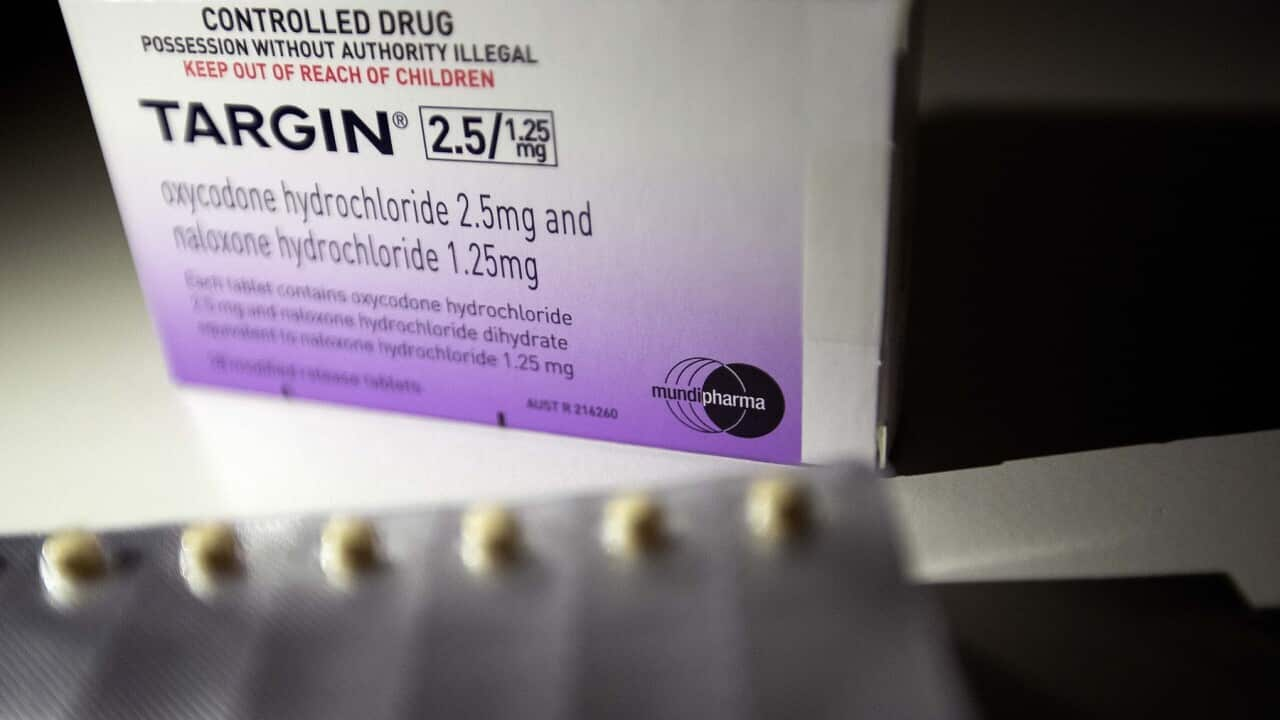TRANSCRIPT
Sister Mary-Lynne Cochrane was first prescribed opioids in her thirties for arthritic pain.
She ended up taking them every day for nearly 30 years.
"My experience for me the first time using opioids was an absolute relief because of removing the pain that I was experiencing at the time. But as my time went on, I realised that to get any relief constantly I needed to take more opioids. The side effects for me became a bit problematic. Like I, there was a stage where I couldn't drive. I was becoming just lethargic and sort of not wanting to do anything. It was like being in the cloud."
So, what is an opioid?
Professor of Pharmacology at Macquarie University Mark Connor.
"An opioid is a drug that activates opioid receptors. Originally, they came from poppy plants. So, people would be familiar with morphine. And then there are a lot of other synthetic molecules that do the same thing that morphine does. Typically, opioids are used for pain relief, following acute trauma. So, if you break a leg or potentially have a serious operation, they can also be used to treat some kinds of chronic pain, particularly pain associated with cancer."
Some of the most commonly used opioids include codeine, fentanyl, oxycodone and methadone.
They're usually found in tablet form, but some treatments come as liquids.
Heroin, another opioid, is typically injected.
Sister Cochrane has been a nun with the Sisters of the Good Samaritan for more than 40 years and she’s lived with debilitating arthritis and nerve pain since her early twenties.
In her opinion, opioids have little to no use for chronic pain in the long term.
"My difficulty was then that I wanted to live a sort of clear quality of life, and how was I going to do that? Because I couldn't do it with the amount of opioids that I was taking at that time. There was a time came that my pain was still there, and it became worse where I went up in opioids in the prescription. That's when I realised that I couldn't keep depending on them, because with the opioids, there still comes a time where you still have the pain."
Opioids are frequently prescribed and used by many people in Australia who are experiencing severe pain.
Department of Health data suggests o n a snapshot day in 2022, almost 56, 000 people [[55,741]] were receiving treatment for their opioid dependence.
It also finds between 2011 and 2022, the number of clients receiving treatment increased by 20 per cent.
Professor Connor says opioids can become harmful if you take them for an extended period without considering if they're still relieving your pain.
"They can stop working after a while, and so you may need to take more opioids and that can become a problem. Typically, they're problematic with long term use. If you take too much at once, initially, you can have a problem with an acute overdose, but for the most part, they're reasonably safe when prescribed for a broken leg or postoperatively. They can be dangerous and they can be problematic for people, but they're also really useful for pain relief, and you know, pain postoperatively or chronically pain is really debilitating."
Opioids now account for more drug-related deaths in Australia than any other drug category.
And although they're only available in specific cases through a doctor, because of their addictive nature, there's also an illegal market.
Mark Lauchs is an Associate Professor at the Queensland University of Technology.
He says fentanyl, which is 50 times more potent than heroin, is one of the most dangerous opioids slowly making its way into the market.
"A lot of people become hooked on fentanyl because they're unaware of fentanyl contamination in other drugs they're taking, this is the evidence from overseas. So, some fentanyl goes into cocaine. Sometimes it appears in meth but the primary group of people who end up with a fentanyl addiction are heroin users. Because fentanyl is so much cheaper, a lot of people who supply heroin are using fentanyl to produce the same outcome as heroin at a much cheaper price, but they're still selling it as heroin."
The United States is already dealing with a fentanyl epidemic - with its Drug Enforcement Agency revealing it seized more of the drug in 2023 than ever before.
It seized 386 million deadly doses of fentanyl - which is says is enough to kill every American.
So, what are the possible implications for Australia?
Associate Professor Lauchs says he thinks the reason it's yet to have a large impact here is because demand for the drug is so high in the U-S.
"The illicit market for fentanyl. The chemicals are made mostly in China. But the fentanyl is produced in Latin America, mainly Mexico, sometimes Colombia. And it's coming to Australia from the information we have right now through the same sources that are providing cocaine from that same region. The danger unlike cocaine is the death rate. Where there's all these stories in America where the overdose, opioid overdose rate is so high they are losing more people than died in the entire Vietnam War from the American army."
The Australian Federal Police says it's aware of the risk fentanyl poses to communities, however there have only been a small number of detections to date.
Health professionals say over 45 per cent [[45.7]] of unintentional drug-induced deaths in 2021 were associated with opioids so there's work to be done to draw attention to the dangers.













